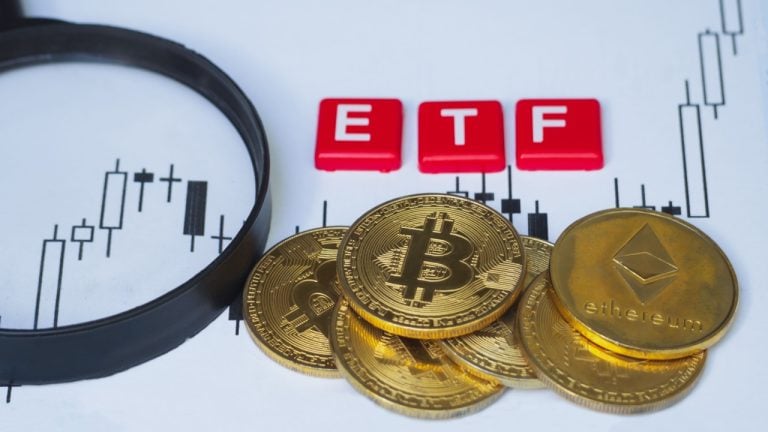10 Crypto Trading Strategies You Shouldn’t Overlook
Digital Asset trading can lead to sizable gains, but it comes with inherent risks. The crypto market is highly volatile. Hence, prices can fluctuate wildly. But with the right strategy, you can test the waters without placing your portfolio at significant risk.
Here’s a list of the top 10 crypto trading strategies that investors may be sleeping on:
1. Dollar-cost averaging
Dollar-cost averaging (DCA) is a simple but effective trading strategy that involves investing a fixed amount of money in a digital asset at regular intervals, regardless of the price. This strategy helps you to reduce your risk and to average out your purchase price over time.
Example: Let’s say you want to invest $100 in Bitcoin. You could invest the entire amount at once, but this would mean that your purchase price would be tied to the market price at the time of purchase. If the market price of Bitcoin falls shortly after your purchase, you’ll lose money. To reduce your risk, you could use DCA to invest $10 in Bitcoin every week for 10 weeks. This would average your purchase price over time and reduce your risk of loss.
2. Buy-and-hold
The buy-and-hold strategy is a long-term approach that involves buying digital assets and holding them for the long term. This strategy is based on the belief that cryptocurrencies have the potential to appreciate significantly in value over time.
Example: Let’s say you believe that Ethereum is a good long-term investment. You could use the buy-and-hold strategy to invest in Ethereum and hold it for the next 5 or 10 years.
3. Copy trading
Copy Trading is a trading strategy that involves copying the trades of other traders. This can be a good way for beginners to get started in crypto trading, as it allows them to learn from the experience of more experienced traders. It is also a great way for investors who are looking to earn passive income.
Example: Let’s say you are copying a master trader who has a strategy of buying Bitcoin when it reaches a certain price and selling it when it has gained a 10% profit. If the master trader buys Bitcoin at $10,000, you will automatically buy Bitcoin at $10,000 in your own account. When the master trader sells Bitcoin at $11,000, you will automatically sell Bitcoin at $11,000 in your own account. Use a platform like Zenit World to set copying parameters like executing 2% of what they execute or automatically copying all the moves. Zenit World is a user-friendly and customer-centric crypto platform that has its own crypto wallet, copy trading features, the option of staking its coins, and the potential to earn high rewards.
4. Trend trading
Trend trading is a strategy that involves trading in the direction of the current market trend. This strategy is based on the premise that trends tend to continue for some time.
Example: Let’s say that the Bitcoin market is in an uptrend. You could use the trend trading strategy to buy Bitcoin and hold it until the trend reverses.
5. Swing trading
Swing trading is a short-term trading strategy that involves buying and selling digital assets within a few days or weeks. This strategy is based on the premise that digital assets can experience significant price swings over short periods.
Example: Let’s say that you believe that Ethereum is going to experience a bullish swing in the next few days. You could use the swing trading strategy to buy Ethereum and sell it when you reach your profit target.
6. Day trading
Day trading is a very short-term trading strategy that involves buying and selling digital assets within the same day. This strategy is based on the premise that digital assets can experience significant price movements within a single day.
Example: Let’s say that you believe that Bitcoin is going to experience a bearish swing in the next few hours. You could use the day trading strategy to buy Bitcoin and sell it when you reach your profit target.
7. Paper trading
Paper trading is a great way to practice crypto trading without risking any real money. It involves using a virtual currency to trade on a simulated market. This is a great way to learn how to use different trading strategies and get a feel for the market before trading with real money.
8. Range trading
Range trading is a strategy that involves buying and selling digital assets within a specific price range. This strategy is based on the premise that such assets tend to trade within ranges for periods of time.
Example: Let’s say that the Bitcoin market is in the range of $10,000 to $12,000. You could use the range trading strategy to buy Bitcoin when it reaches the bottom of the range ($10,000) and sell it when it reaches the top of the range ($12,000).
9. Scalping
Scalping is a very short-term trading strategy that involves buying and selling digital assets within minutes or even seconds. This strategy is based on the premise that virtual currencies can experience small price movements in very short periods of time.
Example: You could use the scalping strategy to buy Bitcoin when it reaches a certain price and sell it a few minutes later when it has gained a small profit.
10. High-frequency trading (HFT):
High-frequency trading (HFT) is a type of algorithmic trading that uses sophisticated computer programs to place and execute trades very quickly. HFT is often used by professional traders to profit from small price movements. It’s usually institutions and businesses that engage in high-frequency trading, but if you’re keen on technology, it might be an area that’s worth exploring. In order to do high-frequency trading, you need to have algo trading software.
Example: An HFT trader uses a computer program to automatically execute trades when a specific set of market conditions are met i.e. asset price thresholds, volume parameters, etc. They set the kind of market order and other features as well.
Tips Worth Remembering When Crypto Trading
The crypto market is highly volatile, so traders of every experience level must tread carefully. Understand the market really well, familiarize yourself with different crypto trading strategies, learn from experts, do community research, and then make moves. To help you navigate this digital frontier effectively, here are some tried-and-tested tips to improve your crypto trading game:
- Diversify Strategically: Experienced traders understand the importance of diversification but do so strategically. Instead of merely holding various coins, focus on diversifying across different avenues, protocols, and projects within the crypto space. This might include staking, yield farming, lending, or participating in decentralized finance (DeFi) projects. Diversifying in this way can help mitigate risks and optimize returns.
- Leverage Advanced Chart Analysis: Expert traders use technical analysis in intricate ways. They go beyond simple support and resistance lines and incorporate more complex indicators and patterns, such as Fibonacci retracements, Ichimoku Cloud, and Elliot Wave Theory. Considering the volatility in the market, you could use trading bots and automated strategies to execute trades based on predetermined criteria.
- Risk Management and Position Sizing: Seasoned traders pay careful attention to risk management. They use advanced position sizing techniques, including Kelly Criterion, to determine how much of their capital to allocate to each trade. They also set stop-loss and take-profit orders for every position, ensuring they have a clear exit strategy in place.
- Stay Informed About Market Sentiment: Expert traders monitor market sentiment closely. They not only keep an eye on news and developments within the digital assets space but also gauge the broader market sentiment by setting keyword alerts for certain industries or topics on social media, forums, and news websites. Understanding market sentiment can provide valuable insights for contrarian or momentum trading.
- Adapt to Changing Market Conditions: Digital asset markets are highly volatile and can change rapidly. Expert traders are flexible and adapt their strategies to different market conditions. They know when to be aggressive during a bullish trend and when to switch to a more defensive approach during a bear market. Being able to pivot and adjust trading strategies based on market dynamics is a hallmark of an expert trader.
In a Nutshell
The above crypto trading strategies provide a solid foundation for both novice and experienced investors. Remember that success in crypto trading doesn’t come overnight; it requires ongoing education, practice, and the ability to adapt to ever-changing market conditions.
Crypto trading can be a rewarding experience, but it’s important to remember that it’s also a risky investment. Apart from following the tips and strategies above, it’s also essential to conduct thorough research and practice prudent risk management, no matter your level of expertise.
By continually honing your skills and staying informed about the latest trends and technologies, you can position yourself for a successful journey in the exciting realm of digital asset trading. Happy trading!
Learn more about Zenit World and get access to exclusive content, including its latest White Paper.
Follow Zenit World on social media to stay up-to-date on the latest news and trends in the industry.
Twitter — Facebook — LinkedIn — Youtube — Blog — Telegram — Reddit — Linktree
Disclaimer: None of the above information should be construed as professional financial or investment advice. The digital asset market is highly volatile, and investing in cryptocurrency and other digital assets carries inherent risks. Consulting with a professional financial adviser is highly recommended before making any investment decisions.
The post 10 Crypto Trading Strategies You Shouldn’t Overlook appeared first on Blockonomi.








